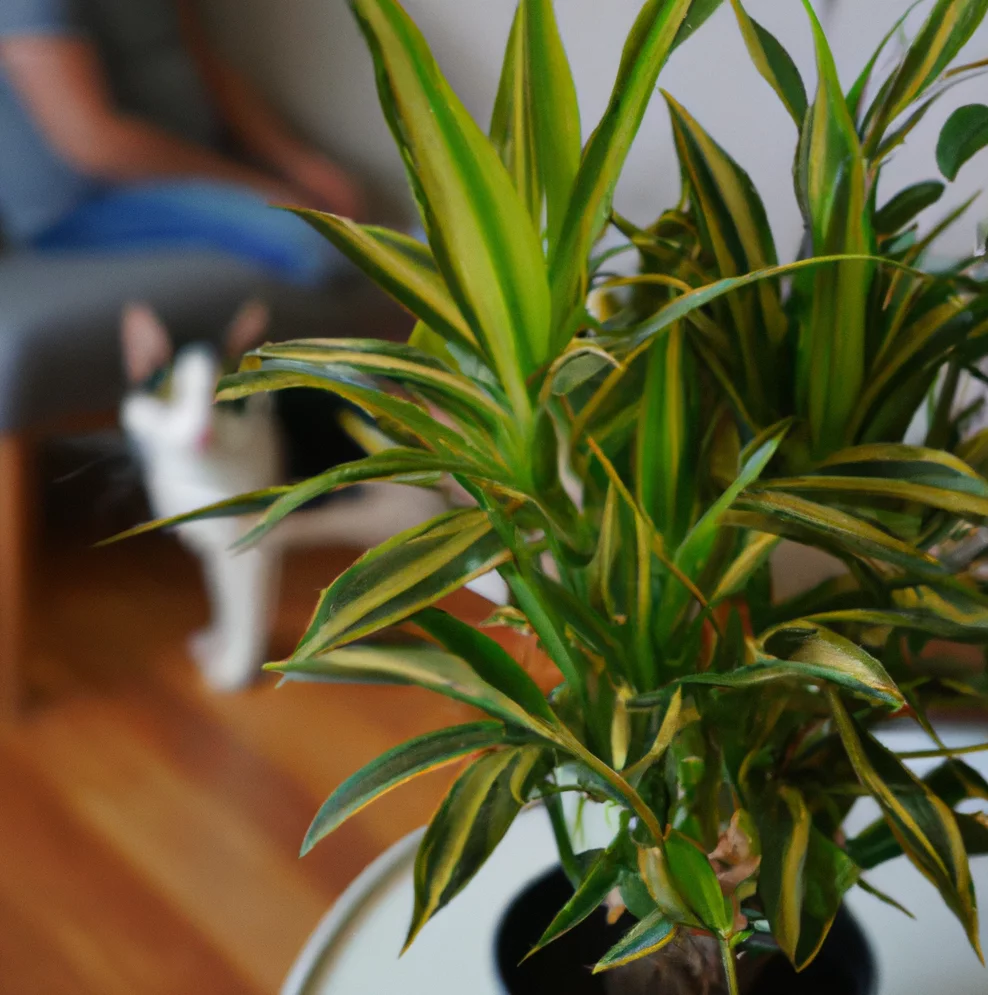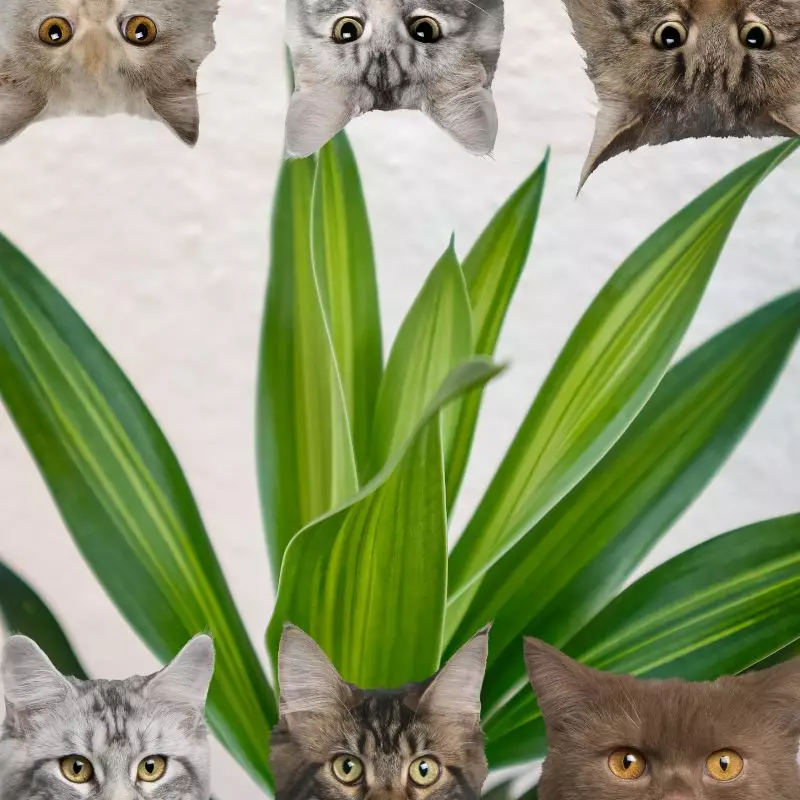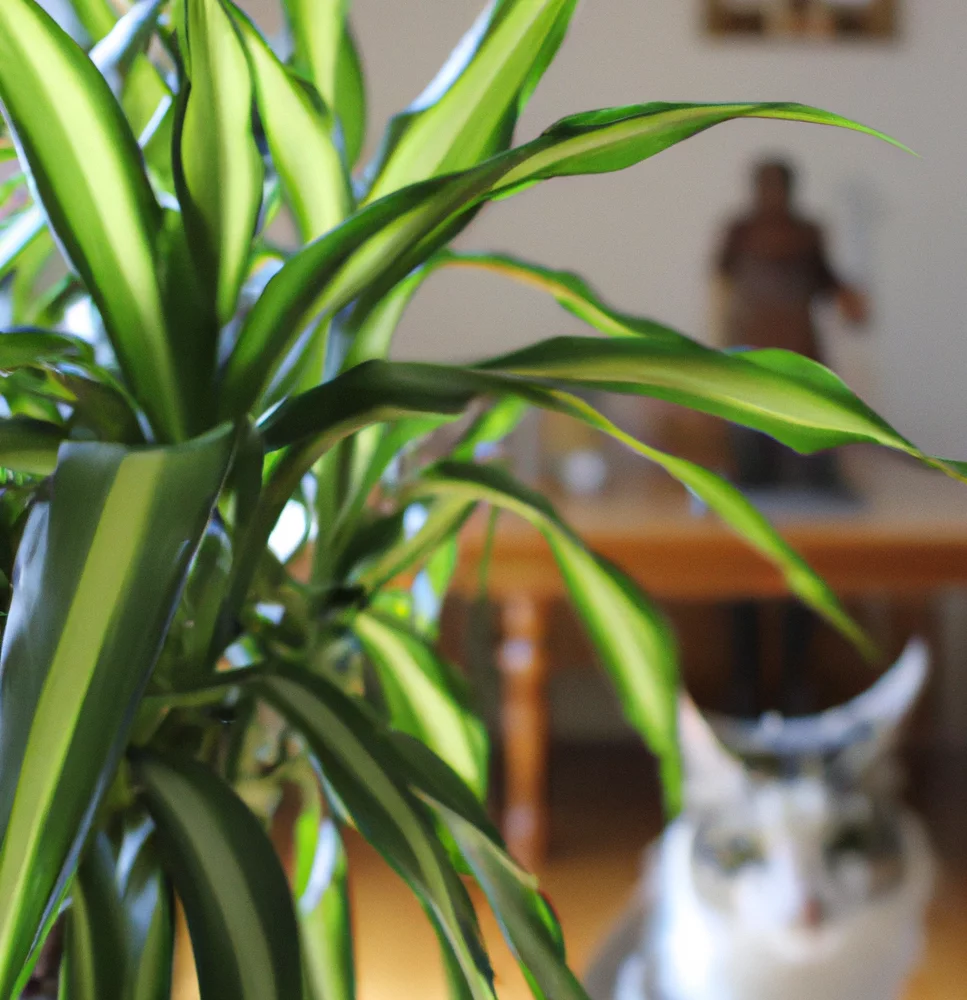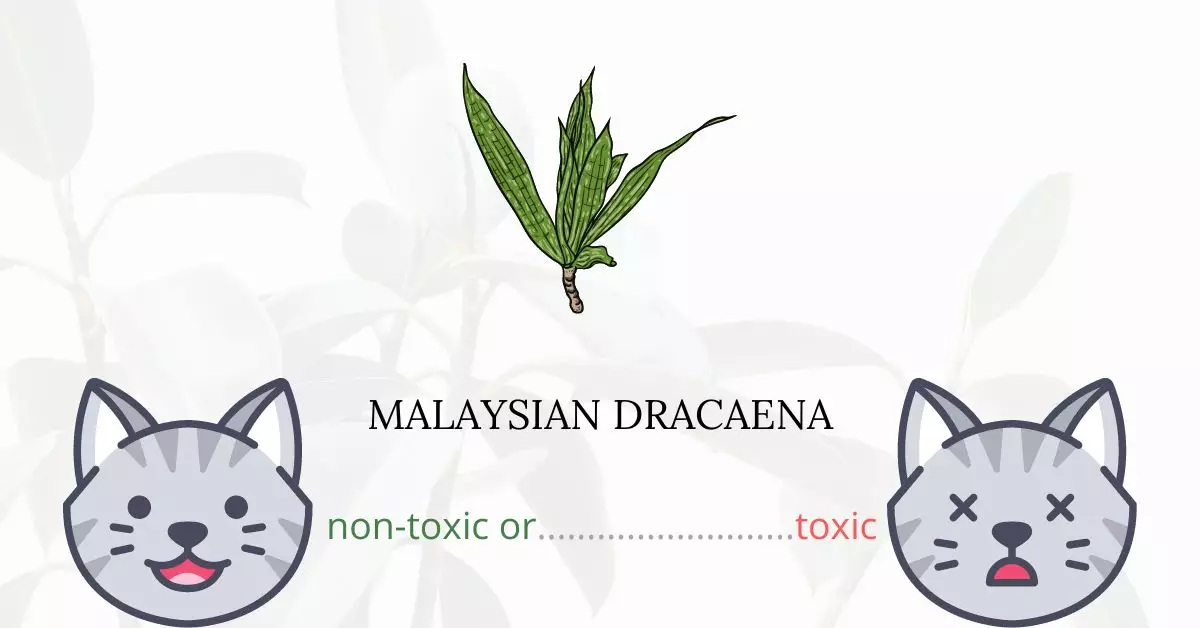Malaysian Dracaena is non-toxic to cats.
This article has been crafted with the invaluable input from a team of experienced DVMs (doctors of veterinary medicine). Thanks to their expertise, we offer accurate and current insights on the potential risks linked with various plants, specifically the Malaysian Dracaena, in relation to cats. In addition to our DVM collaborators, we’ve extensively referenced high-authority websites such as the ASPCA and PetMD to ensure every piece of information is both trustworthy and up-to-date.
Can Cats Eat Malaysian Dracaena?

Cats can consume Malaysian dracaena, albeit it may not be healthy for them. Additionally, you should watch out for symptoms of gastrointestinal trouble because eating the fronds may result in them getting lodged or causing discomfort. Otherwise, if your cat eats this plant, it should be okay.
Cats’ gastrointestinal systems and metabolisms have adapted to consuming meat because they are obligate carnivores. They require crucial nutrients that only meat can give them because they have poor digestion and can’t get such elements from plants. When feeding a cat, you must always put meat on the table because they are not designed to digest a plant-based diet.
What is Malaysian Dracaena?

The Malaysian Dracaena (Dracaena reflexa), also referred to as the Songa of India, is a tree that is indigenous to the Indian Ocean islands of Mozambique, Madagascar, Mauritius, and other nearby islands. It is cultivated extensively as an ornamental plant and houseplant and is prized for its vibrantly colored, evergreen leaves and thick, irregular stems.
Malaysian Dracaena is often much smaller, especially when cultivated as a houseplant, even if it may reach a height of 4-5 m, and rarely 6 m in optimal, protected situations. It has an upright habit, modest growth, and a tendency to take on an oval shape with an open crown. The lanceolate leaves are uniformly dark green, simple, spirally arranged, 5–20 cm long, 1.5–5 cm wide at the base, with parallel venation and a whole border.
The flowers bloom in the middle of winter and are tiny, clump-like, typically white, and unbelievably fragrant. Neither the fruit nor the blooms are very eye-catching.
Keeping Cats Away From Malaysian Dracaena

Provide a plant for your cat. By giving your cat its own cat grass or indoor cat garden, you may divert their attention from your plants. These kinds of grass are typically seeds made of wheat, barley, or rye.
Make your plant look unattractive. Anything citrus-flavored is strongly disliked by cats. To deter any cat invasion, you can spray the leaves of your plant with lemon, lime, or orange juice diluted with water.
Plants to Avoid For Your Cats
If you are a cat owner and unsure if the plants growing in your yard are harmful to your cats, check out this list of toxic plants for cats. You can also check our list of non-toxic plants for cats.





